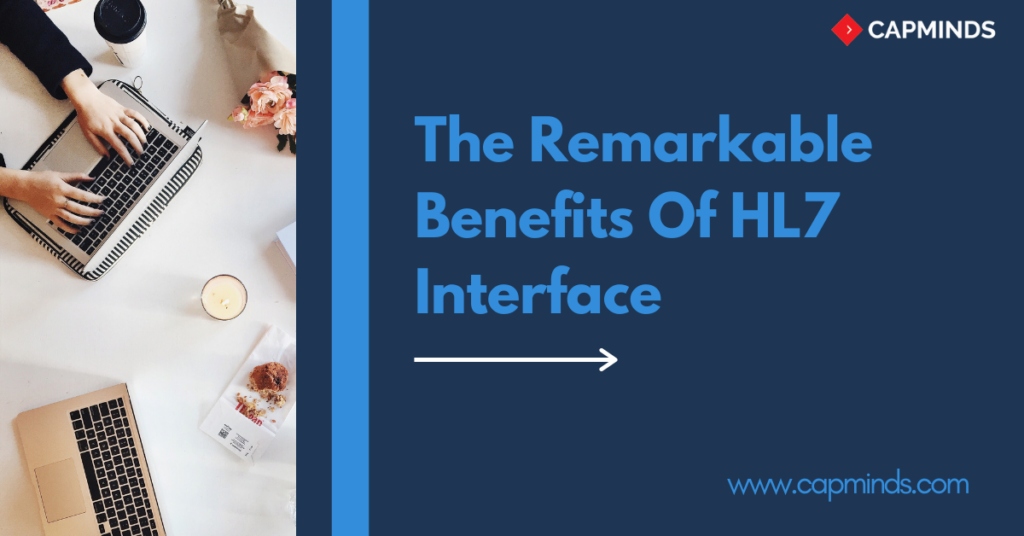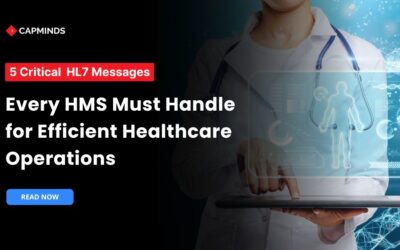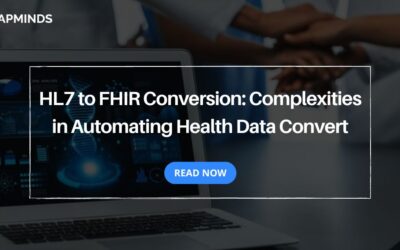The Remarkable Benefits Of HL7 Interface
Interoperability has been a top topic in the healthcare industry for decades. Even though the health data was managed with many advanced programming systems, the healthcare information exchange was full of data misinterpretation. This lack of interoperability costs the US healthcare system roughly $30 billion annually. So, the need for seamless data integration has been increased gradually to achieve true interoperability.
To simplify the process of data exchange, the non-profit organization, Health Level Seven International, developed HL7 standards. This article presents the importance and benefits of HL7 interface and the need for getting started with the recent substandard FHIR services.
How HL7 Interface Is Unique?
HL7 interface helps to bridge the gap between health IT applications and makes data sharing easier and more efficient when compared to other systems. Today, most healthcare providers make use of numerous healthcare applications for everything right from medical billing to maintaining patient information securely.
The real challenge is that communication between these various types of software is very hard to achieve. The other real-time problem arises when two healthcare providers need to share health information. To solve all these issues, HL7 providers set standards and guidelines to help software vendors and healthcare providers to exchange health information securely.
Here, the applications can make use of the data without any additional software for communication or send paper-based health records. Overall, the HL7 interface aims to make healthcare data sharing easier and secure, which ultimately reduces the practice administrative burden while also improve healthcare delivery.
The Most Commonly Used HL7 Standards
The important function of HL7 standards is to achieve interoperability between health information systems. It also makes sure whether all the documentations remain consistent across all the systems, even if some specific systems are part of different health care organizations. The most commonly used standards include:
1. Continuity of Care Document: an XML markup standard that specifies the standards relating to encoding, structure, and the semantics of patient summary clinical documents to be exchanged.
2. Structured Product Labeling: an XML-formatted standard that defines human prescription drug labeling content.
3.Version 2.x/3 Messaging Standard: an interoperability specification for health and medical transactions.
4. Clinical Document Architecture (CDA): an XML markup standard that specifies standards relating to encoding, structure, and the semantics of clinical documents that are to be exchanged.
5. Clinical Context Object Workgroup: a standard protocol that synchronizes disparate applications in real-time at the UI level.
6. HL7 Version 2 Product Suite: allows for data exchange between medical systems.
RELATED: A SECRET GUIDE TO HL7 INTERFACE: WHAT IS IT?
Who Uses HL7 Standards?
HL7 standards are used by hospitals, governmental healthcare institutions, healthcare software providers, laboratories, private clinics, pharmaceutical companies, and other medical facilities. It is most commonly used by:
1. Clinical Interface Specialists
It includes the individuals who are entrusted with moving clinical information. They make tools to move such information and clinical applications that need to impart information to different systems. These users are responsible for moving clinical information between applications or healthcare providers.
2. Government Healthcare Organisations
It contains the individuals who are hoping to share information across numerous elements or in future information movement. In addition, these users are regularly hoping to move clinical information in another space that isn’t covered by current interfaces and have the ability to embrace or mandate a messaging standard.
3. Clinical Informaticists
It involves the individuals who work inside the field of health informatics goes under this. Health informatics is the study of the rationale of medical services and how clinical information is created.
What’s more, these users try to embrace or make a clinical ontology—a kind of various leveled design of healthcare information (an information model) as well as the workflow (how things get done).
The Importance Of HL7 Interface In Healthcare
Interoperability plays a very important role in today’s healthcare industry. As healthcare organizations continue to adapt to new and advanced software for automating processes, it is crucial to ensure seamless data integration between all systems.
1. Integration With Other Systems
In today’s modern world, healthcare organizations make use of much-advanced software to run essential daily work processes. All these software are designed with different functionalities and features. Some tools include the basic features and the other holds advanced functions.
The real challenge here is that some healthcare organizations use large and complex data systems and essentially operate using massive data while other organizations use more simple and basic solutions. The main purpose of the HL7 standard is to create a universal protocol so that any healthcare organization with proper permission can access and retrieve information from other healthcare software systems.
2. Workflow Automation
Although EHR systems are the most well-known and generally utilized solution for practice workflow automation, it is regularly difficult to appropriately impart between different EHRs and other information sources, including lab services and so on.
Here, HL7 standards can help improve interoperability and send information whether the systems utilize older communication systems or current APIs. Also, HL7 can fill in as a device for work process automation if a clinic or clinical association doesn’t have a comprehensive EHR.
3. Collaboration
As HL7 serves as an integral resource for storing and exchanging data, it has potential for worldwide use and collaboration. One of the continuous issues in the medical care industry includes cooperation between set up administrative establishments and the quickly developing health tech area alongside private practices.
Health-Level-Seven standards make a bond together for all medical care players, including private clinics, labs, and healthcare software providers, empowering them to coordinate quicker and more proficiently. Moreover, HL7 protocols assume a vital part amid the global COVID-19 pandemic.
Benefits Of Hl7 Interface To Medical Practices
1. HL7 Improves Clinical Productivity
Improved correspondence between various clinical associations takes into consideration the amassing of more significant information that can be utilized to improve the quality and productivity of a patient’s care. HL7 empowers quicker and smoother information exchange which permits clinicians to get up-to-date data and get a more extensive clinical point of view as more persistent records are accessible for access.
2. HL7 Standards Eliminate Administrative Errors
Through HL7, clinicians approach significant data from different sources and can be certain that all information is synchronized and applicable. With a decreased requirement for mentioning and filling out data physically, HL7 standards save time and guarantee higher exactness when managing patient records.
3. HL7 Sets Out Open Doors For Innovation
Apart from consistent information transmission between existing frameworks utilized by specific clinical organizations, the HL7 protocols additionally open more opportunities to explore different avenues regarding other software solutions. This not just makes a more extensive pool to look over yet, addition, empowers adaptability as far as tech solutions for healthcare organizations.
HL7 Vs FHIR: Why To Go With FHIR?
Comparing HL7 Vs FHIR, Fast Healthcare Interoperability Resources is a new specification and the latest version of HL7 that can be used as a stand-alone data exchange standard. FHIR is the up-to-date framework of healthcare information exchange, specially designed based on the needs of digital interactions.
FHIR could be the enhanced version when compared to other HL7 versions, to make the usage and sharing of electronic health records easier and more efficient. The top benefits of implementing FHIR include:
- Data Sharing made simple with FHIR
- Developer Friendly
- The specification is Free for Use
- Supports RESTful Architecture
- Fast and Easy to Implement
- Cost Savings Approach
- FHIR suits well for mobile
RELATED: THE MYSTERY BEHIND FHIR IN HEALTHCARE DATA SHARING
HL7 FHIR: The Future
No wonder, the benefits of HL7 interface is enhancing every aspect of healthcare today. Here at CapMinds, we understand the real transformational phase the Healthcare industry is going through especially due to the outbreak of COVID-19. Our HL7 FHIR integration services create wonders for your healthcare practice.
CapMinds HL7 interfaces ensure compliance to regulatory standards set by the U.S. Department of Health and Human Services (HHS), (HIPAA), and International Organization for Standardization.
If you ready to make use of the benefits of the HL7 interface to improve your practice workflow, contact CapMinds today.





